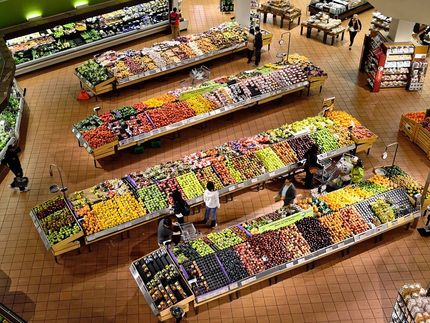Adulterated foods investigated: modern analytical methods verify that foods are genuine
BfR hosts the European conference of Food Law Enforcement Practitioners (FLEP)
melamine in milk powder or Methanol in spirits - under certain circumstances, food adulteration can pose a health risk to consumers. The increasing globalisation of the food and feed market in particular calls for reliable strategies allowing for analytical testing of the properties of products. On the occasion of the Food Law Enforcement Practitioners (FLEP) conference held in Berlin on 18 and 19 February 2015, approximately 50 experts will discuss the latest developments in food analysis methods. Additional topics covered are the implementation of the EU Directive on the Provision of Food Information to Consumers, online food shopping, and new methods of product chain analysis. The Federal Institute for Risk Assessment (BfR) will host this European conference. "Analytical testing of product identity and guaranteeing traceability are fundamental practices of food safety and must be continually developed further", explains Professor Dr. Dr. Andreas Hensel, President of the Federal Institute for Risk Assessment. "The BfR develops, validates and assesses novel analytical procedures to verify the identity, origins and production of foods."
Food adulteration can pose health risks. In China melamine was used to give the impression that dairy products were high in protein. Due to this contamination, many infants fed with these adulterated products became ill. As a consequence of the melamine crisis of 2008, special regulations on the importation of certain protein-containing products are now in place for goods originating or imported from China. Similarly, reports of the European Rapid Alert System for Food and Feed (RASFF) from 2012 showed that cases of severe poisoning, in some cases fatal, occurred in the Czech Republic, Poland and Slovakia following the consumption of spirits contaminated with methanol.
Ensuring traceability of food and feed at all marketing levels is therefore an important legislative instrument for the protection of consumers. Processes of traceability are typically based on documentation systems used by companies allowing identification of batches. However, food control also requires procedures enabling the verification of declarations and specifications -authenticity testing - on the basis of chemical analysis of the foods. To ensure compliance with applicable legal regulations, the BfR uses routine methodologies such as stable isotope analysis. In addition, the BfR also develops innovative analytical strategies, for example using Fourier transform infrared spectroscopy. Traceability of contaminated or adulterated products is assisted by innovative software solutions developed by the BfR.
“Food adulteration - and hence fraud against consumers - pose new challenges to the food surveillance system”, emphasises the President of the Federal Office of Consumer Protection and Food Safety (BVL), Dr. Helmut Tschiersky. “The BVL is developing concepts to detect and prevent food fraud.” Thus a rapid alert system is to be established. To protect the safety of consumers when shopping on the Internet, the joint central authority of the federal states G@ZIELT which is based at the BVL systematically searches for hazardous products and their providers. Web shops subject to inspection by the food control authorities can communicate this to consumers by means of quality seals (www.bvl.bund.de/internethandel).
Other news from the department science

Get the chemical industry in your inbox
By submitting this form you agree that LUMITOS AG will send you the newsletter(s) selected above by email. Your data will not be passed on to third parties. Your data will be stored and processed in accordance with our data protection regulations. LUMITOS may contact you by email for the purpose of advertising or market and opinion surveys. You can revoke your consent at any time without giving reasons to LUMITOS AG, Ernst-Augustin-Str. 2, 12489 Berlin, Germany or by e-mail at revoke@lumitos.com with effect for the future. In addition, each email contains a link to unsubscribe from the corresponding newsletter.



























































